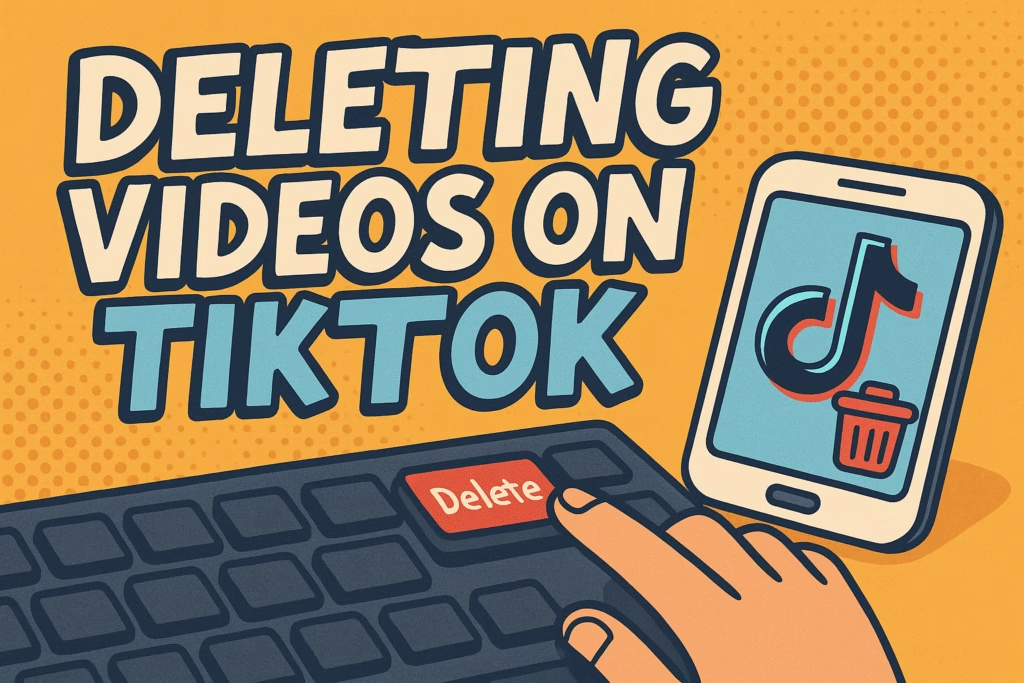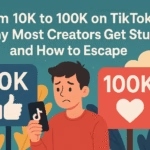You’ve heard the warnings. “Never delete TikTok videos or the algorithm will punish you forever.” It’s repeated so often that it feels like gospel. But is it actually true? What happens when you delete a video versus just making it private?
Whether you’ve evolved your niche, changed your style, or just want to clean house, you’ve likely asked yourself: should I delete old videos? Does it tank reach? Is privating really any better?
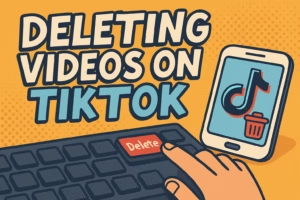
The short answer? Yes — deleting can mess with your momentum. But there’s a lot more nuance than most creators realize. If you’re even slightly serious about growth, what you do with old videos matters.
Let’s unpack the facts.
TL;DR — Here’s the Deal
- Deleting videos frequently sends bad signals to TikTok’s algorithm
- Privating is way safer — and keeps your data intact
- Your old content helps TikTok figure out who to send your new content to
- Niche pivots should be gradual and strategic — not a mass purge
- Think of your videos as breadcrumbs for the algorithm — remove too many, and it gets lost
Why the Algorithm Remembers Everything
TikTok’s algorithm isn’t just about what’s trending right now. It remembers your content history. Everything you post helps train the system to understand:
- What kind of content you make
- Who likes it
- What themes and formats get attention
Each video adds data: watch time, shares, engagement rate, audience demographics. When you delete a video, you’re not just hiding it from viewers — you’re erasing that data entirely.
That’s like deleting a paragraph from your resume every time you get a new job. Eventually, TikTok has no idea what kind of creator you are. The result? Lower reach, inconsistent recommendations, slower growth.
Why Privating Is Almost Always the Better Move

Privating keeps your data in place — but removes the content from circulation. It’s like archiving a post rather than destroying it.
Here’s what stays when you private:
- Watch time history
- Video format data
- Viewer behavior patterns
- Your internal analytics
TikTok has made it clear in closed-door creator briefings: Privating is algorithm-neutral. Deleting is not.
This means if you’re unsure — or you’re trying to test a pivot — privating is your safest bet. The algorithm still “remembers” the post, but it doesn’t show it to users anymore.
What Actually Happens When You Delete a Video
Let’s be real. Some creators think deleting old, low-performing videos will make their feed look cleaner or improve their reach. But in most cases, here’s what you’re really doing:
- You lose all engagement signals: Watch time, saves, comments, and shares — all deleted.
- You reduce your content volume: Fewer posts = fewer discovery chances.
- You reset the momentum on slow burners: Some videos take off after days or weeks. Deleting cuts them off before they grow.
- You scramble your data profile: Frequent deletions disrupt how TikTok understands your account.
Unless your video contains offensive or dangerous content, deleting is like throwing away evidence of progress. Even a low-performing video gives TikTok something to work with.
When Deleting Is Justified
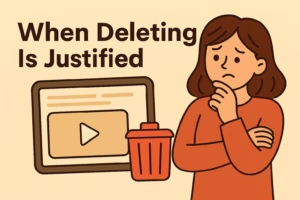
There are times when deleting is the right move. Here’s when it makes sense:
- Community Guideline violations — especially if TikTok has flagged it
- You exposed private info or someone else’s face without consent
- Severe off-brand content that doesn’t align with your identity
- You posted in error and want to correct it immediately
In these cases, deleting can be better than keeping a potentially problematic post up. Just don’t make it a habit.
Pivoting Your Content? Don’t Delete — Reposition
One of the most common reasons creators consider mass deletion is when they change their niche. Maybe you went from “fitness bro” to “funny dad skits.” Or from finance tips to food vlogs.
Rather than deleting your old videos, try this:
- Private the least relevant ones — especially those with very different energy
- Create a pinned post that announces your new direction
- Batch post 5–10 videos in your new niche to help re-train the algorithm
- Update your bio and profile pic to reflect the new identity
The key is to create enough new content that TikTok starts associating your account with the new niche — without erasing your content legacy.
Algorithm Impact: Deleting vs. Privating
| Action | Visibility | Data Retained | Algorithm Effect |
|---|---|---|---|
| Deleting | No | No | Negative (confusing) |
| Privating | No | Yes | Neutral/Safe |
| Keeping Live | Yes | Yes | Ongoing, context-rich |
Think of deleting like ghosting the algorithm. Privating is like telling it you’re stepping out for a bit, but still keeping the relationship intact.
Long-Term Strategy: Treat Your Feed Like a Portfolio
TikTok isn’t just about viral hits. Your body of work creates a footprint. The more consistent, rich, and theme-aligned it is — the easier it is for TikTok to know where to slot you.
So don’t obsess over every underperforming post. Focus on:
- Building a clear niche identity
- Posting volume that reflects that identity
- Gradually evolving instead of nuking your past
Even “bad” videos have value as data. They tell the algorithm what doesn’t work. That’s powerful.
How Deleting Affects Momentum
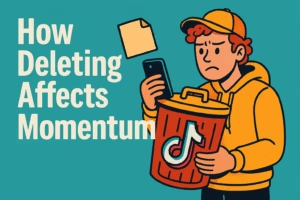
Every time you post, TikTok assesses your recent performance. Removing those posts removes context.
Without that context:
- Your next videos may get tested against the wrong audience
- The algorithm might misread your niche
- You could fall out of favor with your core topic
Your momentum isn’t just about likes — it’s about relevance. And deleting removes that trail.
How to Fix a Feed That Feels Off
If your feed feels disconnected from where you’re going:
- Stop deleting. Freeze and audit.
- List your top performing posts — what do they have in common?
- Batch post 3–5 videos in your new niche back to back.
- Pin your direction — literally and metaphorically.
- Use hashtags strategically to attract new signals.
The fix isn’t purging your past. It’s overwhelming it with better direction.
What TikTok Hasn’t Told You (But Creators Know)
Creators who’ve scaled multiple accounts have noticed the pattern:
- Accounts with lots of deletions stall at 200–800 views
- Privated-heavy accounts recover faster and grow more reliably
- TikTok’s data memory favors accounts that keep a content trail
Some growth experts even advise “content layering” — never delete, just stack better content on top. Your worst post shouldn’t be your last impression, but it should still exist beneath your best.
Final Word: Use Private Like a Pro
Deleting videos on TikTok doesn’t instantly kill your reach. But over time, frequent deletions chip away at your algorithmic history. That weakens your profile and your chances of being recommended.
When in doubt? Private the video. Save the data. Focus on creating new, higher-quality posts that reinforce your current niche.
Don’t rewrite your history. Build on it. One private at a time.
